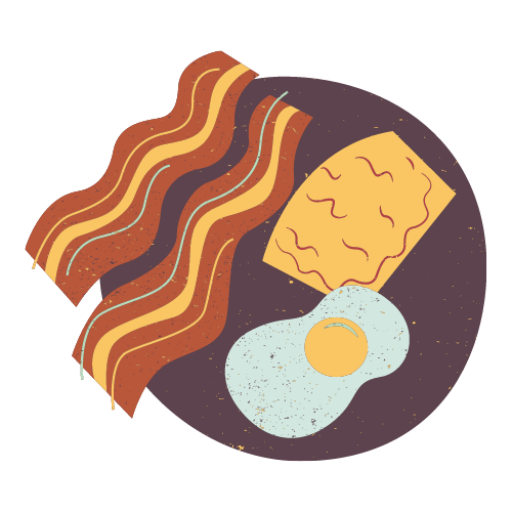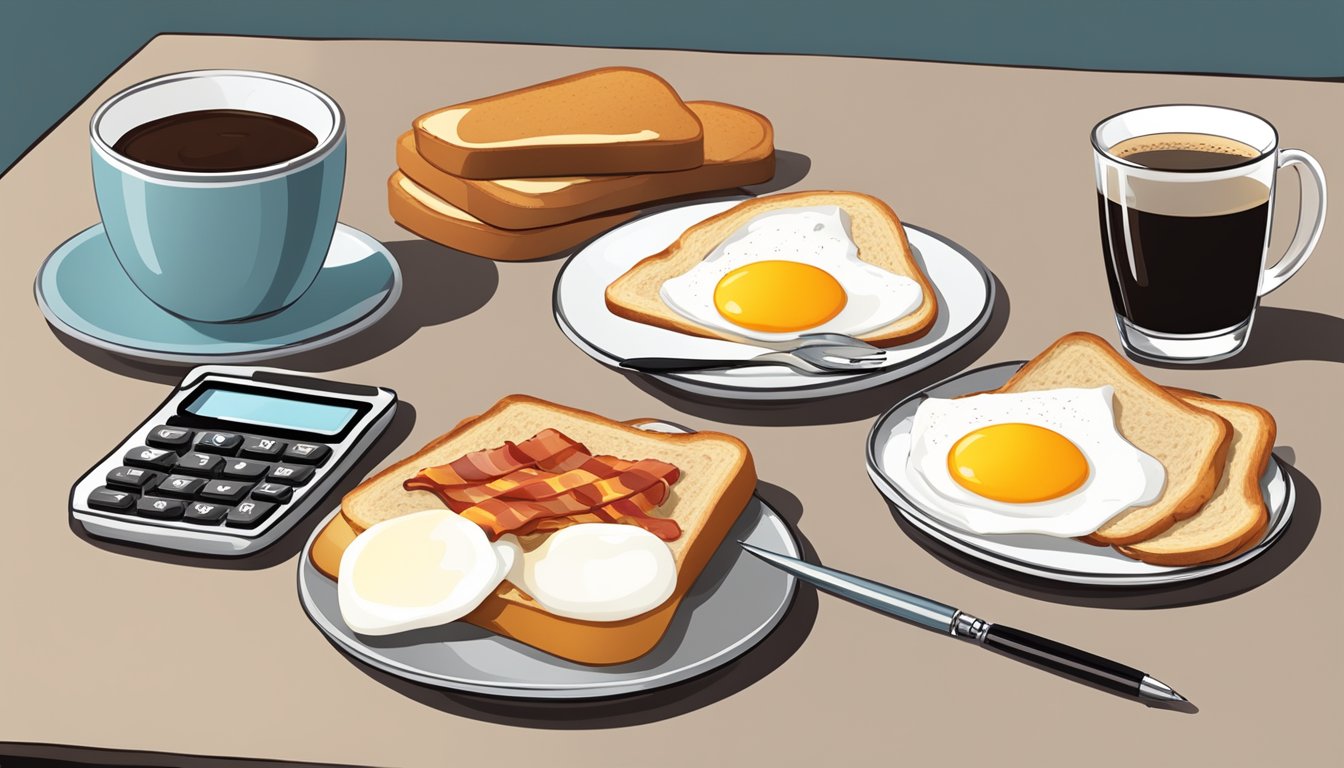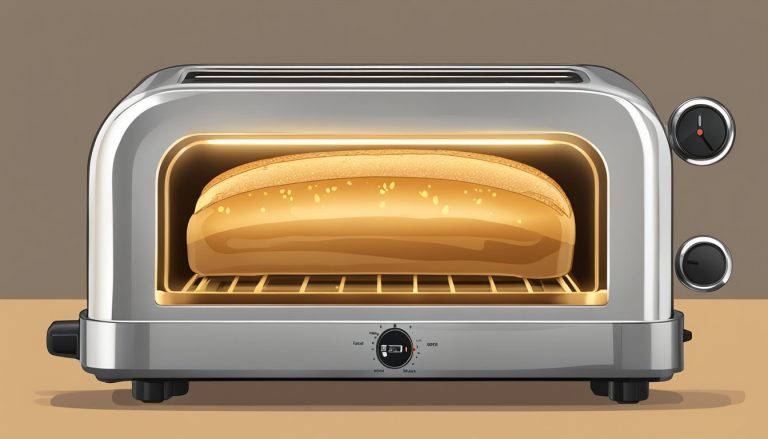Jack’s breakfast menu offers a variety of affordable options that have made it a popular choice for morning diners. The pricing of these breakfast items is influenced by several economic factors. Jack’s carefully balances ingredient costs, labor expenses, and market demand to set competitive prices while maintaining profitability.
The economics behind Jack’s breakfast pricing strategy takes into account regional variations in costs and consumer preferences. Factors like local rent prices, wage levels, and supply chain expenses all play a role in determining menu prices at different locations. Jack’s also considers the overall dining experience, aiming to provide value through both food quality and customer service.
As food prices have risen across the industry in recent years, Jack’s has worked to keep their breakfast offerings affordable. They utilize promotions and deals to attract customers while managing costs. This approach allows Jack’s to remain competitive in the breakfast market while adapting to changing economic conditions.
The Art of Breakfast Pricing

Pricing breakfast items involves balancing costs, market trends, and consumer preferences. Fast food chains like Jack’s carefully consider these factors when setting menu prices.
Cost Structures and Menu Prices
Jack’s Restaurant, like other fast food chains, calculates menu prices based on ingredient costs, labor, and overhead expenses. Breakfast items often have lower profit margins due to competitive pricing.
Bacon and sausage prices fluctuate based on pork market conditions, impacting menu costs. Jack’s may adjust portion sizes or ingredient quality to maintain profitability.
Fixed costs such as rent and utilities are factored into pricing decisions. Economies of scale allow larger chains to negotiate better supplier rates, potentially lowering costs.
Supply and Demand Dynamics
Breakfast demand peaks during morning hours, influencing pricing strategies. Jack’s may offer early bird specials or combo deals to attract customers during slower periods.
Seasonal variations in ingredient availability can affect menu prices. For example, egg prices often rise during winter months due to reduced production.
Consumer preferences shift over time, with health-conscious options gaining popularity. Jack’s adapts its menu to meet these changing demands while maintaining competitive prices.
Competitive Pricing Analysis
Fast food chains closely monitor competitors’ breakfast prices. Jack’s aims to position its menu items competitively within the local market.
Price comparison of popular items:
- Sausage Biscuit: $1.59
- Bacon, Egg & Cheese Biscuit: $3.29
- Deluxe Breakfast: $4.79
These prices are set to attract value-seeking customers while ensuring profitability. Jack’s may use loss leaders, pricing certain items lower to drive traffic and boost sales of higher-margin products.
Industry trends show breakfast item prices have increased by an average of 53% since 2019. Jack’s adjusts its pricing strategy to balance affordability with rising costs and inflation.
Breakfast Menu Offerings

Jack’s breakfast menu features a diverse array of options to cater to different tastes and dietary preferences. From classic favorites to healthier choices, the menu offers something for everyone.
Signature Breakfast Items
Jack’s is renowned for its hearty Southern-style breakfasts. The Deluxe Breakfast platter is a customer favorite, packed with 1020 calories and featuring a generous portion of eggs, sausage or bacon, and hash browns. For those seeking a quick bite, the Breakfast Jack sandwich is a popular choice at $1.69.
Pancakes are a staple on the menu, available individually or as part of larger combos. The Bacon, Egg & Cheese Biscuit, priced at $3.29 for the sandwich alone or $4.49 for the combo, is another crowd-pleaser.
Health-Conscious Selections
Jack’s has adapted to meet the growing demand for healthier breakfast options. While specific details about their health-conscious offerings are limited, it’s likely they offer lighter alternatives to their traditional fare.
Egg white substitutions and turkey bacon options may be available upon request. Some locations might offer oatmeal or yogurt parfaits as part of their healthier menu items.
Specialty Items and Secret Menu
Jack’s breakfast menu includes unique items that set it apart from competitors. The Breakfast Burrito is a popular choice for those seeking a handheld option with a bit more variety than a standard sandwich.
While not officially advertised, Jack’s is rumored to have a secret menu. This may include special combinations or modifications of existing menu items. Gluten-free pancakes might be available at select locations, catering to customers with specific dietary restrictions.
Nutritional Value and Customer Preferences

Jack’s breakfast menu offers a range of options balancing taste and nutrition. The nutritional content varies across items, allowing customers to make informed choices based on their dietary needs and preferences.
Calories and Protein Counts
Jack’s breakfast items typically contain between 300 to 800 calories. Higher-calorie options often include heartier sandwiches or platters. Protein content ranges from 15 to 40 grams per item, providing a substantial morning energy boost.
Many breakfast sandwiches deliver 18-28 grams of protein. The Big Breakfast Sandwich with sausage packs 28 grams of protein and 830 calories. For a lighter option, the Buttered Biscuit contains 340 calories and 5 grams of protein.
Carbohydrate content varies widely, from 30 to 100 grams depending on the item. This allows customers to select meals that align with their carbohydrate intake goals.
Balancing Flavor and Health
Jack’s strives to cater to diverse customer preferences by offering both indulgent and health-conscious options. Popular items like the Big Breakfast Sandwich appeal to those seeking a satisfying, high-calorie meal.
For more health-focused customers, Jack’s provides lower-calorie alternatives and items with reduced fat content. The menu includes options with varying levels of fats, allowing customers to manage their fat intake.
Jack’s makes nutritional information readily available, empowering customers to make choices aligned with their dietary goals. This transparency helps build trust and loyalty among health-conscious patrons.
Customer favorites often strike a balance between flavor and nutrition. Jack’s continues to refine its menu based on customer feedback, adapting to evolving nutritional preferences and trends in the breakfast market.
Operational Costs and Catering Services

Jack’s Breakfast optimizes its operational costs through strategic supply chain management and diversifies revenue streams with catering services. These approaches allow the restaurant to maintain competitive pricing while expanding its market reach.
Supply Chain Efficiencies
Jack’s Breakfast implements several tactics to minimize food costs and streamline operations. The restaurant partners with local suppliers to secure fresh ingredients at favorable prices. Bulk purchasing of non-perishable items helps reduce per-unit costs.
Inventory management software tracks ingredient usage, minimizing waste and overordering. Jack’s also cross-utilizes ingredients across menu items to maximize efficiency. For example, eggs used in omelets are also incorporated into breakfast sandwiches and baked goods.
The kitchen layout is designed for optimal workflow, reducing labor costs and improving order fulfillment times. Energy-efficient appliances and LED lighting help lower utility expenses. These combined efforts keep operational costs in check, allowing Jack’s to offer competitive breakfast prices.
Diversification through Catering
Jack’s Breakfast expands its revenue potential by offering catering services. This strategy leverages existing kitchen resources and staff during slower periods, maximizing asset utilization.
The catering menu features popular breakfast platters, including assorted pastries, fruit trays, and hot items like scrambled eggs and bacon. Pricing for catering orders factors in food costs, labor, and packaging expenses while maintaining attractive profit margins.
Catering services target local businesses, community events, and private gatherings. This diversification helps offset fixed costs and provides additional income streams. By offering both dine-in and catering options, Jack’s Breakfast can better navigate seasonal fluctuations in customer traffic and optimize its overall financial performance.
Marketing Strategies in Breakfast Sales

Breakfast marketing tactics have evolved to capture early morning customers and drive sales. Promotions and targeted advertising play key roles in attracting and retaining breakfast patrons.
Promotions and Customer Retention
Jack in the Box employs various promotional strategies to boost breakfast sales. Limited-time offers on breakfast items create urgency and encourage repeat visits. The chain frequently introduces new menu items to keep customers interested.
Loyalty programs reward regular customers with points or free items after multiple purchases. This incentivizes repeat business and helps build a loyal breakfast customer base.
Combo meals bundling breakfast sandwiches with hash browns and coffee provide value for budget-conscious consumers. These deals make the morning meal more appealing and cost-effective.
Target Market and Advertising
Jack in the Box targets diverse customer segments for its breakfast offerings. Marketing efforts focus on busy professionals, students, and families seeking quick, convenient morning meals.
Advertisements highlight the chain’s extensive breakfast menu, including unique options like the Breakfast Jack and Loaded Breakfast Sandwich. Commercials often feature these items alongside milkshakes, appealing to those with a sweet tooth.
Social media campaigns showcase breakfast options and engage younger audiences. Posts often emphasize the chain’s all-day breakfast availability, setting it apart from competitors.
Customer service is emphasized in marketing materials, promoting fast and friendly experiences for time-pressed morning customers.
Comparative Analysis with Competitors

Jack’s breakfast offerings face stiff competition in the fast food market. Several major chains have established strong breakfast programs, each with unique positioning and menu items.
Breakfast Market Positioning
Jack’s positions its breakfast menu as a value-oriented option with a diverse selection. The chain emphasizes its all-day breakfast availability, setting it apart from competitors like McDonald’s who limit breakfast hours. Jack’s targets the late-night crowd and early risers alike, capitalizing on its 24/7 drive-thru access.
Burger King takes a similar approach with all-day breakfast, while Taco Bell focuses on Mexican-inspired breakfast items. Subway entered the breakfast market later, emphasizing healthier options and customization.
An Overview of Competitive Offerings
McDonald’s remains the breakfast leader, known for classics like the Egg McMuffin. Their menu balances traditional items with newer offerings like breakfast burritos. Burger King’s breakfast mirrors McDonald’s in many ways, with additional items like French Toast Sticks.
Taco Bell differentiates with items like the Breakfast Crunchwrap and Breakfast Quesadilla. This unique approach appeals to younger demographics and those seeking non-traditional options. Subway offers breakfast sandwiches on their signature breads, allowing for customization.
Jack’s breakfast menu includes both traditional items and unique offerings like the Loaded Breakfast Sandwich. The chain’s variety and innovation in the breakfast space help it compete effectively against larger rivals.
Consumer Behavior and Breakfast Timing

Jack’s breakfast pricing strategy is closely tied to consumer behavior patterns and peak demand times. Understanding these factors helps explain why certain menu items are priced the way they are and when they’re available.
Understanding Peak Breakfast Hours
Jack’s typically serves breakfast from 6:00 AM to 11:00 AM. This timeframe aligns with most customers’ morning routines and work schedules. The busiest period is usually between 7:00 AM and 9:00 AM, when many people stop for breakfast on their way to work or school.
During these peak hours, Jack’s may adjust pricing or offer special promotions to maximize revenue. For example, they might price popular items like breakfast sandwiches slightly higher during this rush. Conversely, they may discount less popular items to encourage sales.
The breakfast menu’s availability is limited to morning hours due to kitchen logistics and the need to transition to lunch items. This scarcity can drive demand, as customers know they have a finite window to purchase their favorite breakfast foods.
Adapting to Consumer Schedules
Jack’s has adapted its breakfast offerings to cater to different consumer schedules and preferences. They recognize that not all customers have traditional 9-to-5 jobs or eating habits.
To accommodate early risers, Jack’s starts serving breakfast at 6:00 AM. This appeals to shift workers, commuters, and those who simply prefer an early meal. For late risers or those who enjoy breakfast foods throughout the day, some locations may offer select breakfast items all day.
Jack’s also considers regional differences in work schedules and eating habits when setting breakfast hours. In areas with a high concentration of night shift workers, some locations may extend breakfast hours or offer breakfast items during non-traditional times.
By aligning their breakfast timing with consumer behavior patterns, Jack’s aims to maximize customer satisfaction and sales. This strategy helps them price items effectively and ensure they’re meeting the needs of their diverse customer base.




